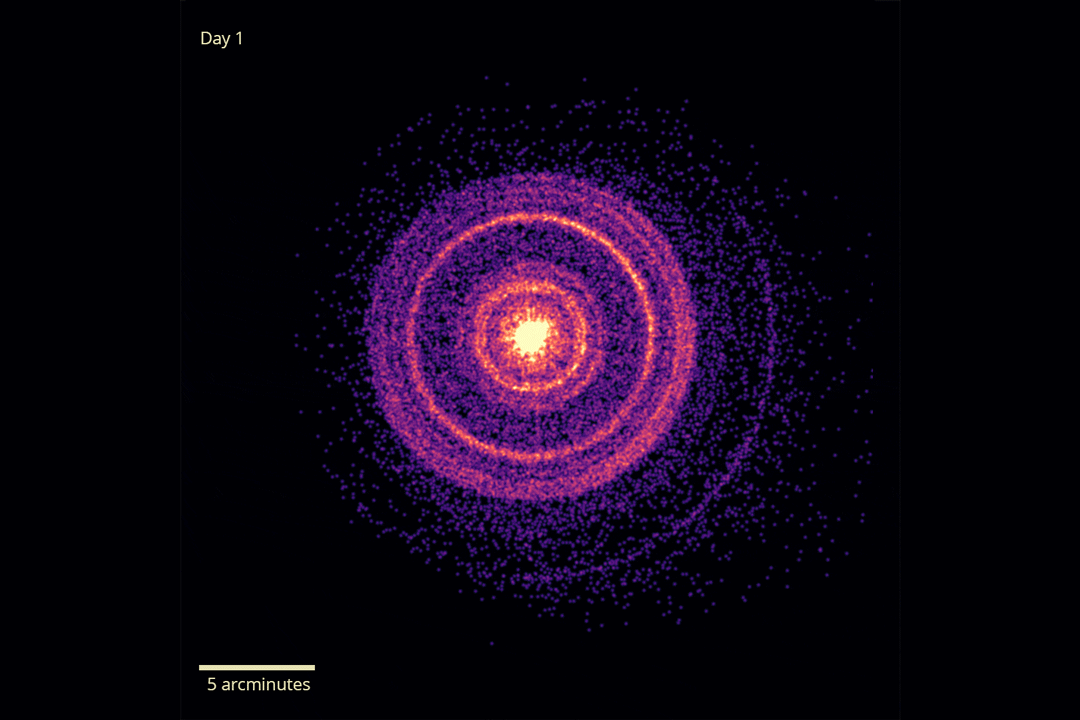When scientists at the George Washington University and other institutions detected the gamma-ray burst known as GRB 221009A on Oct. 9, 2022, they dubbed it the BOAT, or “brightest of all time.” Now, months after its initial burst, scientists studying GRB 221009A describe an unusual structure to the jet of material expelled during the explosion that may explain GRB 221009A’s extreme brightness and why its afterglow remained visible for so long after the event.
A team of researchers headed by lead author Brendan O’Connor, a sixth-year doctoral student in the Columbian College of Arts and Sciences physics department, published their study, “A structured jet explains the extreme GRB 221009A,” last week in the journal Science Advances.
“GRB 221009A represents a massive step forward in our understanding of gamma ray bursts and demonstrates that the most extreme explosions do not obey the standard physics assumed for garden variety gamma ray bursts,” said O’Connor, who led the research team that was using the Gemini South Telescope in Chile to observe the event last October.
"For a long time, we have thought about jets as being shaped like ice cream cones," said Alexander van der Horst, associate professor of physics at GW and study co-author. "However, some gamma-ray bursts in recent years, and in particular the work presented here, show that we need more complex models and detailed computer simulations of gamma-ray burst jets."
Gamma-ray bursts are the most violent and energetic explosions in the universe, releasing the same amount of energy in just a few seconds that the sun produces over its entire lifetime. According to scientists, GRB 221009A resulted from the collapse of a massive star into a black hole.
Examining troves of multi-wavelength data from October’s gamma-ray burst, the research team found that GRB 221009A’s jet exhibited a narrow core with wide sloping wings, which was different from the types of jets seen in gamma-ray bursts produced by other cataclysmic events and may explain why scientists kept seeing GRB 221009A’s multi-wavelength glow for months after the explosion.
“GRB 221009A might be the equivalent Rosetta Stone of long GRBs, forcing us to revise our standard theories of how relativistic outflows are formed in collapsing massive stars,” O’Connor said.
The findings will fuel future studies of gamma-ray bursts and motivate scientists to create simulations of gamma-ray burst jet structures.
In addition to O'Connor and van der Horst, several other GW scientists contributed to this study and others related to GRB 221009A, including physics graduate student Michael Moss, professor Chryssa Kouveliotou, associate professor Sylvain Guiriec, and research faculty members George Younes, Jonathan Granot and Paz Beniamini. Researchers from the University of Rome also contributed to this study, which was funded by NASA, European Research Council and Smithsonian Astrophysical Observatory.



